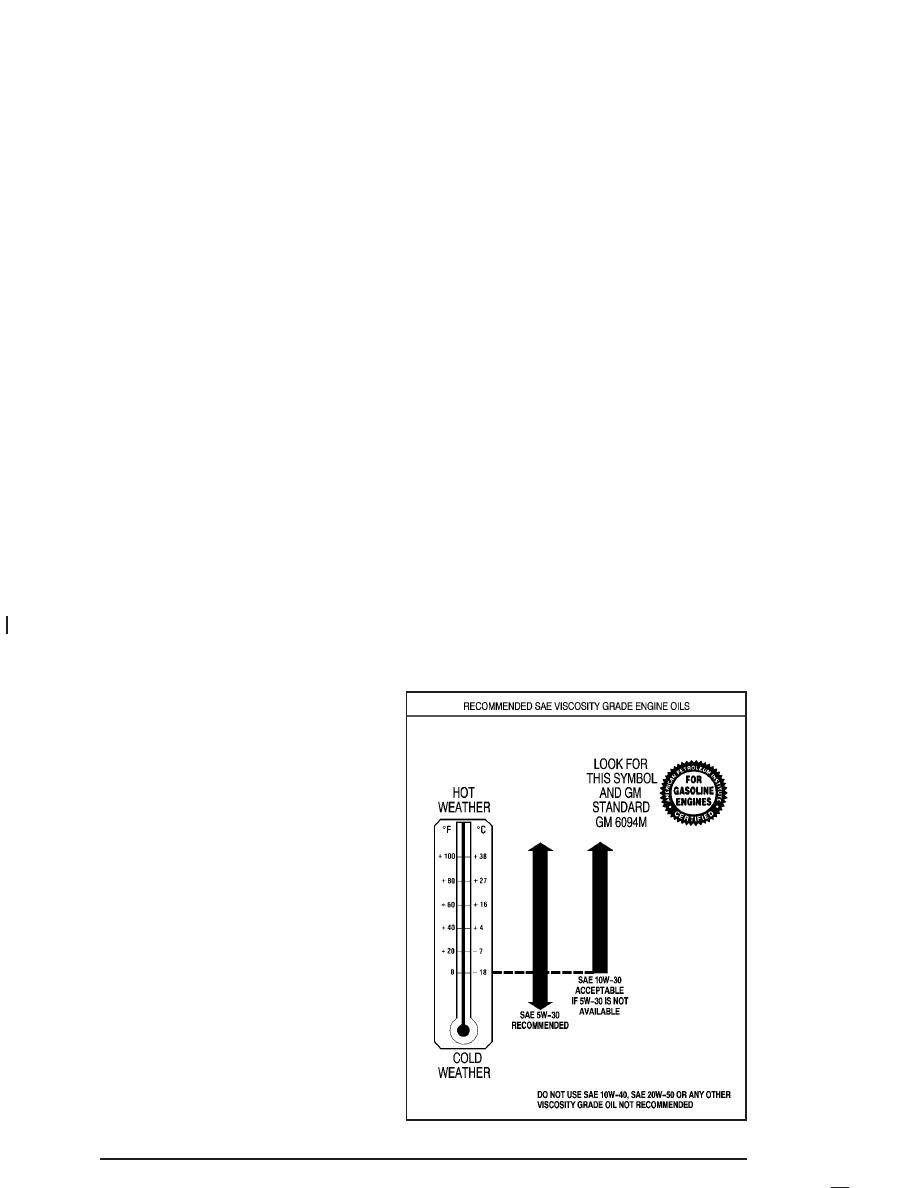Oldsmobile Bravada (2004 year). Manual - part 18
-------------------------------------------------------------------------------------------------------------------------------------------------------------

What Kind of Engine Oil to Use
Look for two things:
•
GM6094M
Your vehicle’s engine requires oil meeting GM
Standard GM6094M. You should look for and use
only an oil that meets GM Standard GM6094M.
5-16